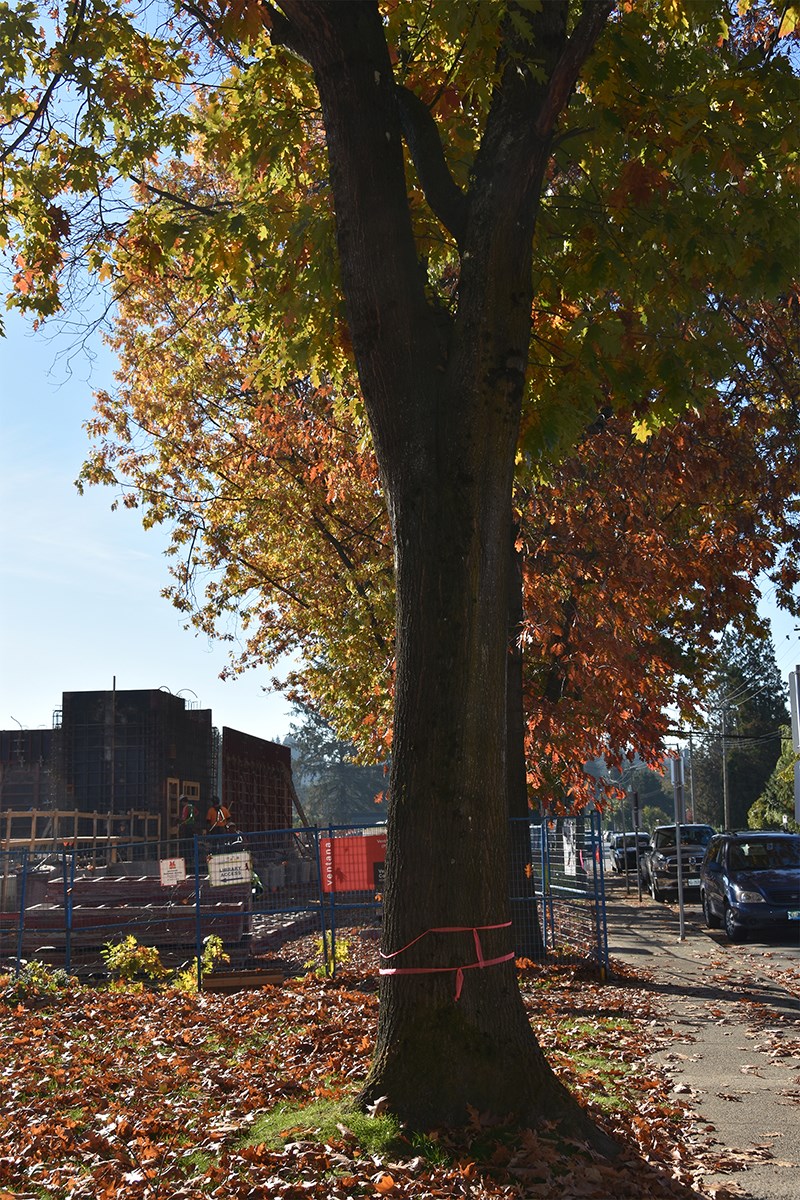Several large deciduous trees with pink ribbons tied around them next to the Port Coquitlam recreation complex construction are destined to come down in the next few weeks.
Some have huge canopies of colourful leaves and large trunks but need to come down because they are in the way of the new building footprint, are diseased or have poor structure because they were planted too close to hydro lines, according to the city.
“The tree bylaw does permit the removal of significant trees for construction of buildings,” stated Kristen Dixon, the city’s chief administrative officer in an email to The Tri-City News. “Ventana Construction applied for and received a tree removal permit for the necessary work.”
Of the 146 trees on the site, as many as 122 have to be removed for the $132 million project, including an 18-metre tall Douglas Fir deemed too large to transplant. About half of the trees were felled in February in time for March construction.
The next phase of work will see the remaining trees taken down, however, the city will keep them standing as long as possible.
“The city recognizes the loss of trees will have a significant impact on the site until new trees are planted, and will leave the remaining trees standing as long as possible,” Dixon added.
For example, the cherry trees at the front of the library will remain until the existing Terry Fox Library is demolished.
The PoCo recreation centre property has been known as a showcase for a wide variety of trees, including cherry, maple, spruce, pine, holly, hazel, hawthorne, oak, cypress, magnolia, sequoia, sweetgum and London Plane. These trees were planted during the various stages of expansion and renovation of the existing buildings.
But the development of the new recreation centre required a major review by arbourists and park staff to see which trees could be saved. In the end, as many as 24 will be preserved, with seven left on the site and 17 relocated to other parks and properties.
New trees will also be planted as part of the project’s landscaping plan, still in development, on at least a one-for-one basis, although not all the trees will be placed on the recreation property. New trees that don’t fit on the site itself will be added to other city properties and parks, Dixon noted.
“The landscaping plan will ensure that the appropriate species are planted in the right locations on the site.”
Still, the public will witness the removal of some large trees over the coming weeks. Tree removal is expected around the perimeter of the property and inside the construction area, with work taking place at the end of October.
And while they may disappear from the site, they won’t be discarded.
It’s possible some of the wood could be used for interior features, carving projects, outdoor kiosks, benches, interpretive signage posts, gazebo or split-rail fencing, educational materials, such as tree cookies or tree rings, and natural play features.
As well, some of the branches and trunks could also be chipped into mulch for parks and trails.
— with files from Janis Cleugh



